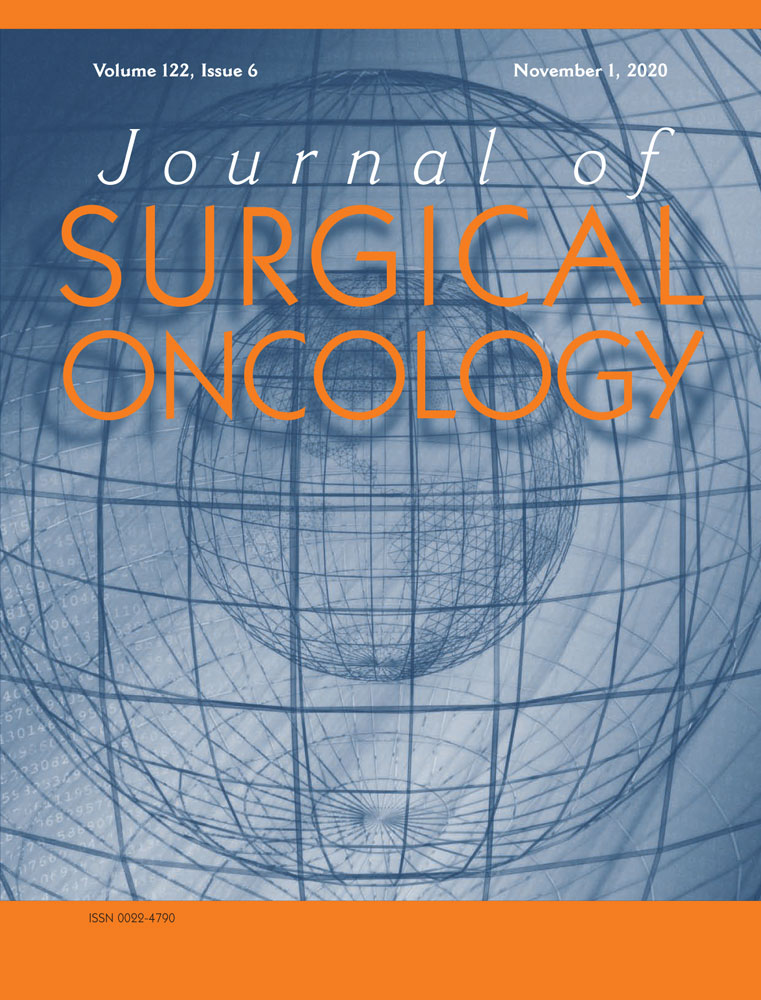Clinical significance of SLN benign capsular nevi in patients with melanoma
Abstract
Background
Benign capsular nevi (BCN) are not infrequent in sentinel lymph nodes (SLN) of patients with melanoma. Their prognostic significance is unknown and the literature is limited. This study evaluated the clinical significance of incidentally found BCN in these patients.
Methods
A multi-institutional retrospective review of patients undergoing SLN biopsy for cutaneous melanoma between 2000 and 2016. Patients were divided into the following groups: (a) negative SLN and no BCN, (b) negative SLN and presence of BCN, (c) positive SLN seen only on immunohistochemistry (IHC), and (d) positive SLN via hematoxylin and eosin (H&E). Outcomes measured were overall survival and any recurrence.
Results
A total of 1253 patients were identified (group 1 = 978, group 2 = 56, group 3 = 32, and group 4 = 187). Fifty-seven percent were male and the mean age was 59.3 years. BCN was identified in 77 patients (6.2%), of which the majority was in the node-negative group (72%). Multivariable analysis showed that BCN was associated with lower recurrence rates, though not statistically significant (hazard ratio [HR] = 0.5; P = .06). IHC- and H&E-positive SLNs were associated with a higher risk of recurrence (HR = 2.4; P = .02 and 2.0, P < .0001, respectively).
Conclusion
Patients with BCN and negative SLN had lower recurrence rates than patients with negative SLN and no BCN. Our data suggest a possible protective effect against recurrence.
CONFLICT OF INTERESTS
James W. Jakub is on Novartis Surgical Oncology Advisory Board. The remaining authors declare that there are no conflict of interests.
Open Research
DATA AVAILABILITY STATEMENT
Due to the sensitivity of research content, research data are not shared.




